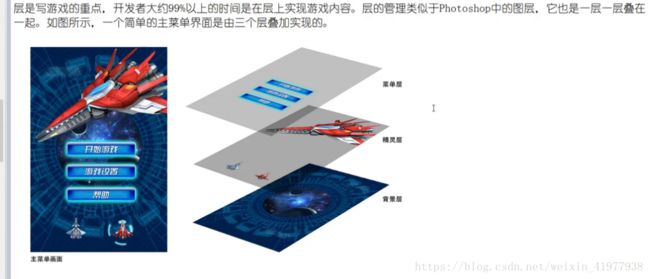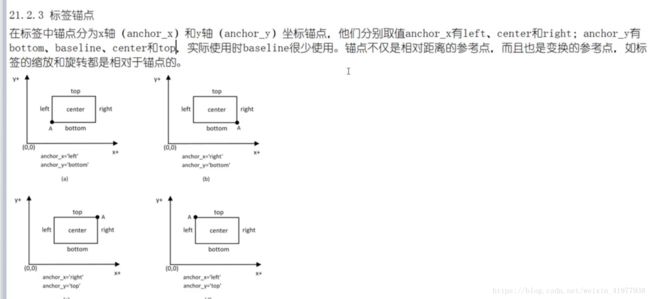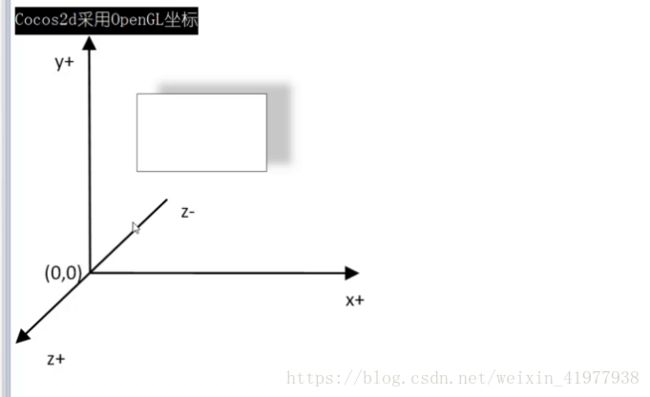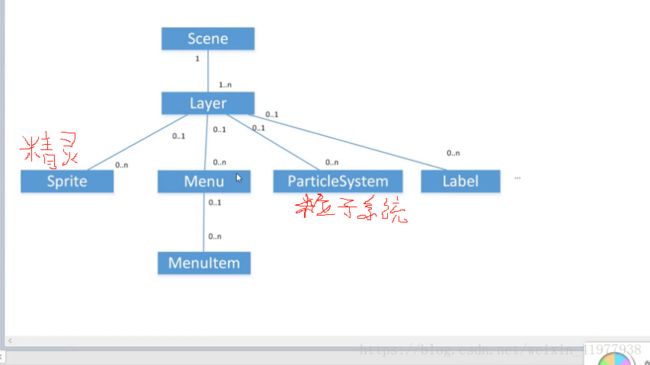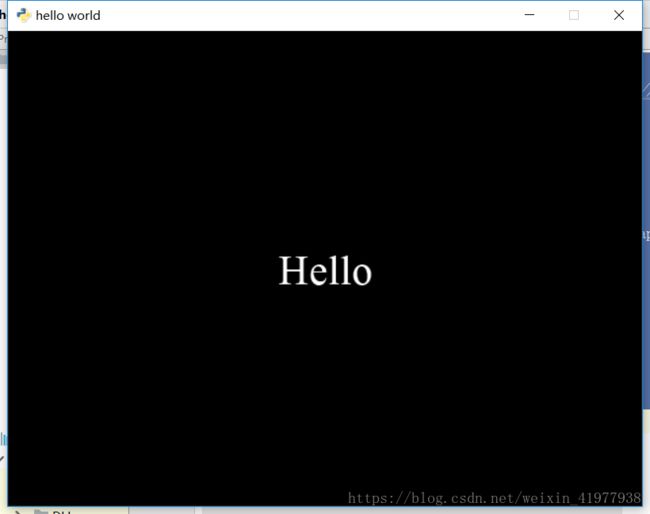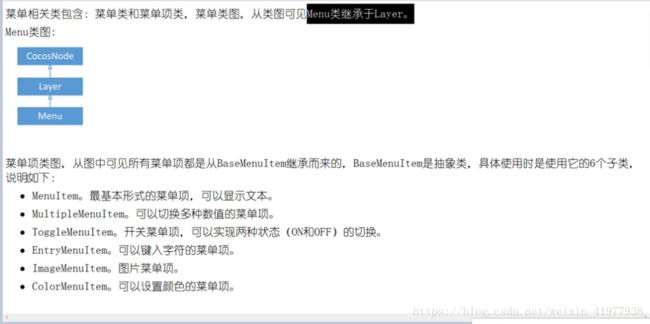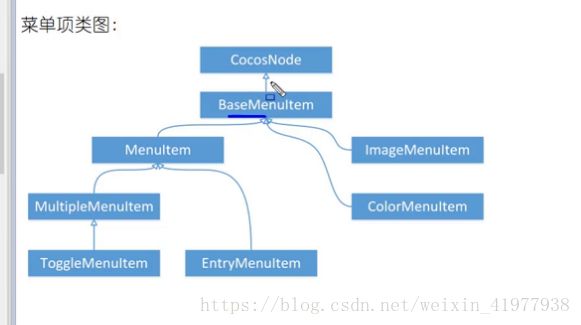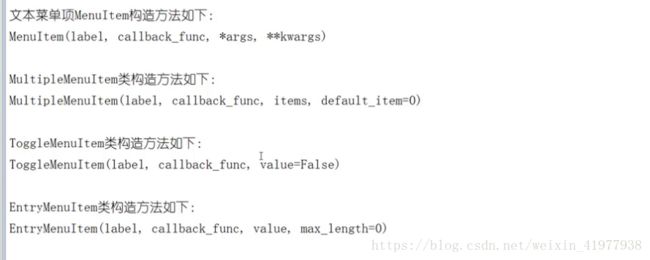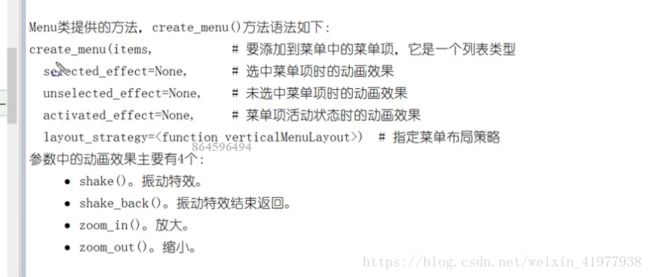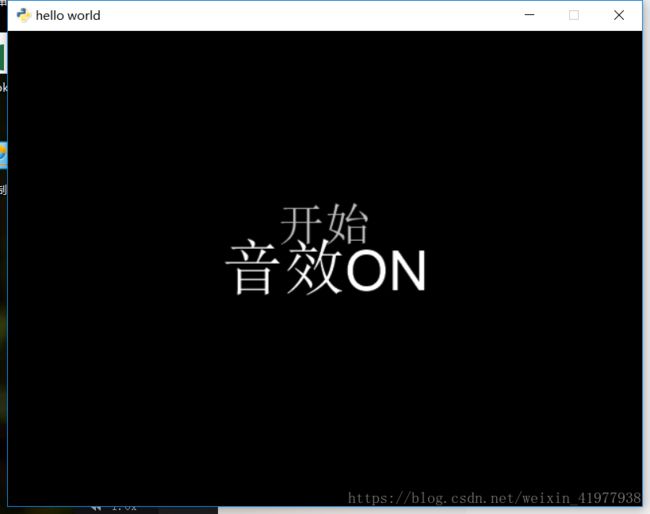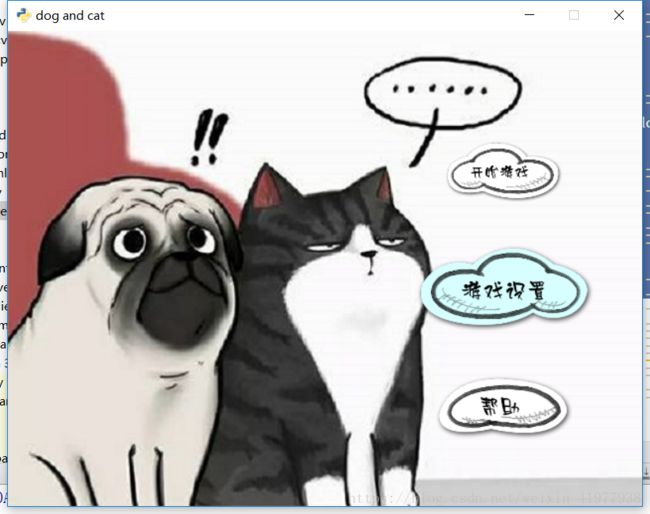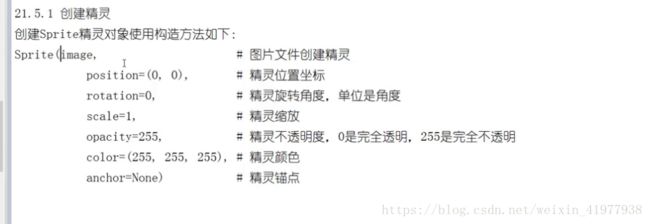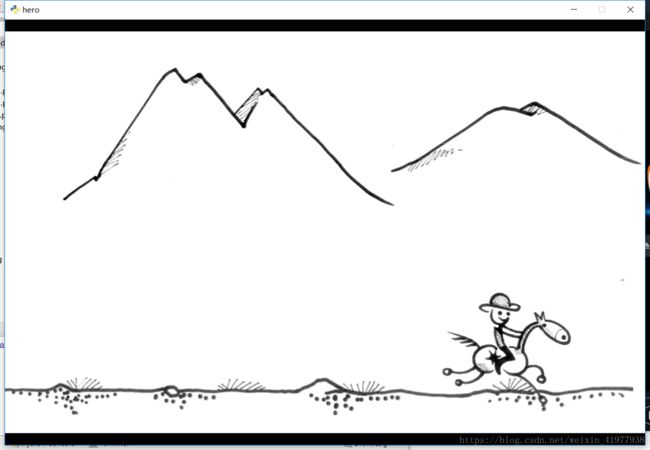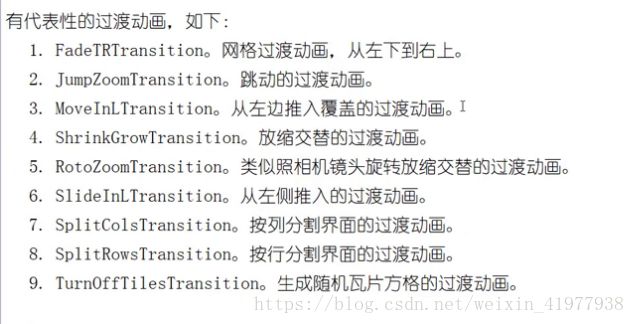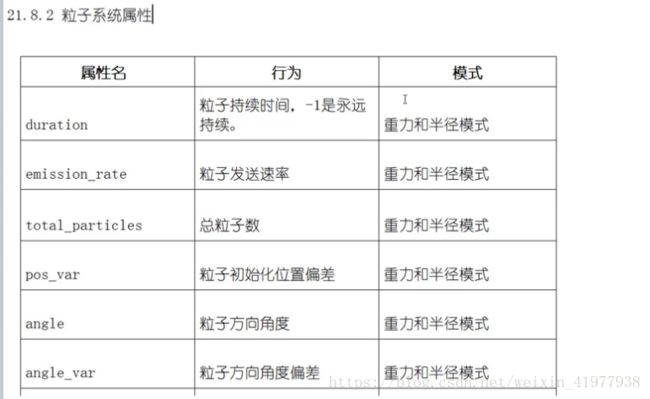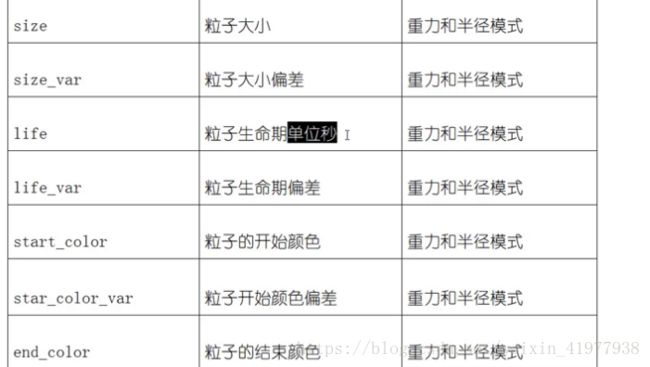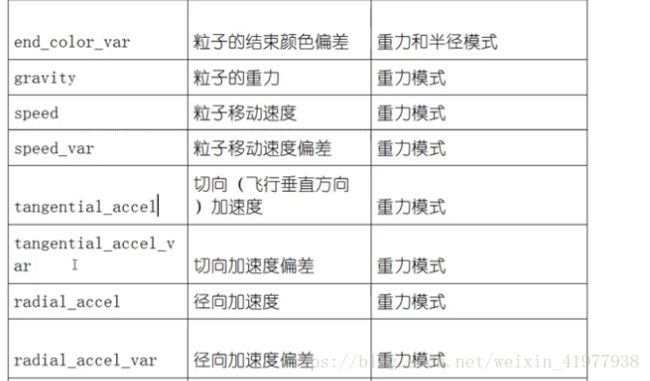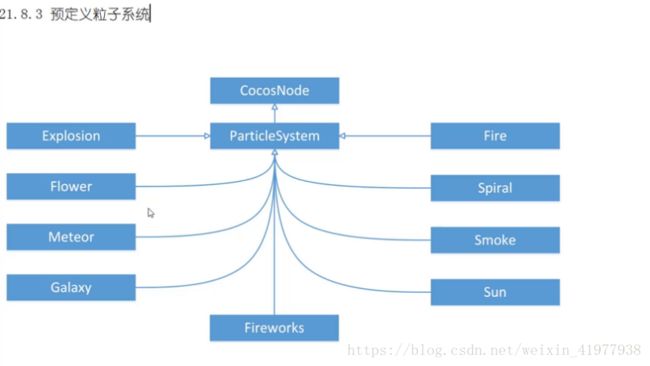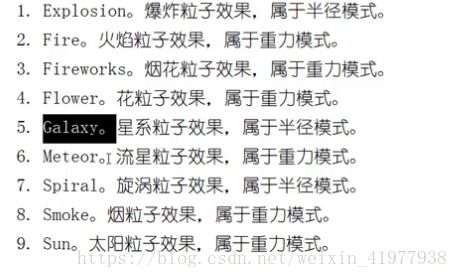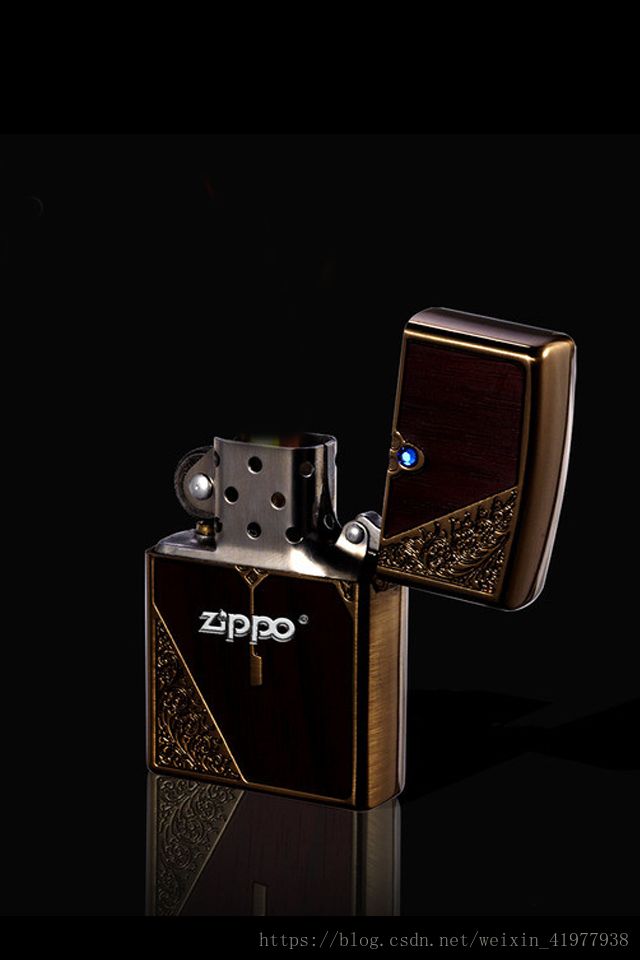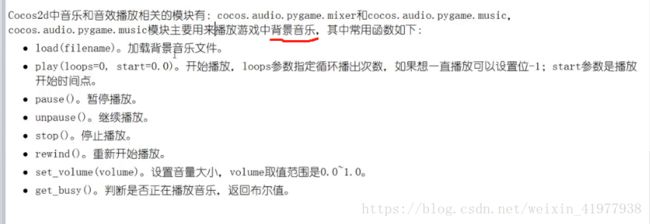Cocos2d python
家族
概念:
1导演
2场景
3层
4精灵
5菜单
标签的锚点:
坐标
层级结构:节点的层次结构--Node,可通过add添加
例子:
import cocos
class hello(cocos.layer.Layer):
def __init__(self):
super(hello, self).__init__()
# 创建标签!!!!!!!
label = cocos.text.Label('Hello',
font_name='Times New Roman',
font_size=32,
anchor_x='center', anchor_y='center')
# 获得导演窗口的宽度和高度,是一个二元组
width, height = cocos.director.director.get_window_size()
# 设置标签的位置
label.position = width // 2, height // 2 # //整数除法 去掉小数部分
# 添加标签到HelloWorld层
self.add(label)
if __name__=='__main__':
#初始化导演
cocos.director.director.init(width=640,height=480,caption="hello world")
#创建层 的实例
layer=hello()
#创建场景 添加层进来
main_scence=cocos.scene.Scene(layer)
#启动场景
cocos.director.director.run(main_scence)
结果:
菜单:
例子:
import cocos
#自定义菜单类
class main_menu(cocos.menu.Menu):
def __init__(self):
super(main_menu, self).__init__()
#文本菜单项 (文字,回掉函数)
item1=cocos.menu.MenuItem('开始',self.item1_callback)
# 开关菜单项 (文字,回掉函数,状态)
item2 = cocos.menu.ToggleMenuItem('音效', self.item2_callback,False)
#创建菜单(添加项的列表,选中效果,未选中效果)
self.create_menu([item1,item2],
selected_effect=cocos.menu.shake(),
unselected_effect=cocos.menu.shake_back(),
)
#改变字体
self.font_item['font_size']=22
#选中时
self.font_item_selected['font_size']=33
def item1_callback(self):
print('item1')
def item2_callback(self,value):
print('item2')
if __name__=='__main__':
#初始化导演
cocos.director.director.init(width=640,height=480,caption="hello world")
#创建层 的实例
mainmenu=main_menu()
#创建场景 添加层进来
main_scence=cocos.scene.Scene(mainmenu)
#启动场景
cocos.director.director.run(main_scence)
结果:
图片菜单
import cocos
#背景层
class Game_BG(cocos.layer.Layer):
def __init__(self):
super(Game_BG,self).__init__()
d_width, d_height = cocos.director.director.get_window_size()
# 创建背景精灵
background = cocos.sprite.Sprite('images/bg.jpg')
background.position = d_width // 2, d_height // 2
self.add(background)
#自定义菜单类
class main_menu(cocos.menu.Menu):
def __init__(self):
super(main_menu, self).__init__()
# 也可以改变图片项的大小
# 改变字体
self.font_item['font_size'] = 66
# 选中时
self.font_item_selected['font_size'] = 66
#改变颜色 rgba
self.font_item['color'] = (255,255,255,25)
# 选中时
self.font_item_selected['color'] = (25,255,255,255)
menu_start=cocos.menu.ImageMenuItem('images/start-up.png',self.menu_start_callback)
menu_setting= cocos.menu.ImageMenuItem('images/setting-up.png', self.menu_setting_callback)
help_setting = cocos.menu.ImageMenuItem('images/help-up.png', self.menu_help_callback)
#创建菜单(添加项的列表,自定义布局位置)
self.create_menu([menu_start,menu_setting,help_setting],
layout_strategy=cocos.menu.fixedPositionMenuLayout([(500,339),(500,220),(500,100)]),
selected_effect=cocos.menu.zoom_in(),
unselected_effect=cocos.menu.zoom_out())
def menu_start_callback(self):
pass
def menu_help_callback(self):
pass
def menu_setting_callback(self):
pass
if __name__=='__main__':
#初始化导演
cocos.director.director.init(width=640,height=480,caption="dog and cat")
#将背景层 添加到场景
bg=Game_BG()
main_scence=cocos.scene.Scene(bg)
#添加菜单
mainmenu=main_menu()
main_scence.add(mainmenu)
#启动场景
cocos.director.director.run(main_scence)键盘事件
import cocos
import pyglet
# 背景层
class la(cocos.layer.Layer):
def __init__(self):
super(la, self).__init__()
# 开启事件处理层 有事件发生 就要写
# !!!!!!!!!!!!!!!!!!!!
cocos.layer.Layer.is_event_handler = True
self.label = cocos.text.Label('Hello',
font_name='Times New Roman',
font_size=32,
anchor_x='center', anchor_y='center')
# 获得导演窗口的宽度和高度,是一个二元组
width, height = cocos.director.director.get_window_size()
# 设置标签的位置
self.label.position = width // 2, height // 2 # //整数除法 去掉小数部分
# 添加标签到HelloWorld层
self.add(self.label)
def on_key_press(self, ke, modifiiers):#修改方法
if ke == pyglet.window.key.SPACE:# 空格键
self.label.element.text = '空格键按下'
def on_key_release(self, ke, modifiiers):
if ke == pyglet.window.key.SPACE:
self.label.element.text = '空格键势放'
if __name__ == '__main__':
# 初始化导演
cocos.director.director.init(width=640, height=480, caption="dog and cat")
lay = la()
main_scence = cocos.scene.Scene(lay)
# 添加菜单
# 启动场景
cocos.director.director.run(main_scence)
鼠标事件
import cocos
import pyglet
# 背景层
class la(cocos.layer.Layer):
def __init__(self):
super(la, self).__init__()
# 开启事件处理层
# !!!!!!!!!!!!!!!!!!!!
cocos.layer.Layer.is_event_handler = True
self.label = cocos.text.Label('Hello',
font_name='Times New Roman',
font_size=32,
anchor_x='center', anchor_y='center')
# 获得导演窗口的宽度和高度,是一个二元组
width, height = cocos.director.director.get_window_size()
# 设置标签的位置
self.label.position = width // 2, height // 2 # //整数除法 去掉小数部分
# 添加标签到HelloWorld层
self.add(self.label)
def on_mouse_press(self, x,y,button, modifiiers):
if button==pyglet.window.mouse.LEFT:
self.label.element.text='鼠标左键按下'
def on_mouse_release(self, x, y, button, modifiiers):
if button == pyglet.window.mouse.LEFT:
self.label.element.text = '鼠标左键释放'
def on_mouse_drag(self, x, y, dx,dy,button, modifiiers):
#使用modifiiers
if modifiiers & pyglet.window.key.MOD_CTRL:
self.label.element.text = 'ctrl+鼠标左键拖拽'
if __name__ == '__main__':
# 初始化导演
cocos.director.director.init(width=640, height=480, caption="dog and cat")
lay = la()
main_scence = cocos.scene.Scene(lay)
# 添加菜单
# 启动场景
cocos.director.director.run(main_scence)
精灵
import cocos
import pyglet
# 背景层
class la(cocos.layer.Layer):
def __init__(self):
super(la, self).__init__()
#获得尺寸
self.width,self.height=cocos.director.director.get_window_size()
#背景精灵
background=cocos.sprite.Sprite('images/background.png')
background.position=self.width//2,self.height//2
self.add(background,z=-1)#z=前后顺序 小的往屏里
#山
mountain1=cocos.sprite.Sprite('images/mountain1.png',position=(360,500),scale=0.6)#scale缩放
self.add(mountain1,1)
mountain2 = cocos.sprite.Sprite('images/mountain2.png', position=(800, 500), scale=0.6) # scale缩放
self.add(mountain2,1)
#hero
hero = cocos.sprite.Sprite('images/hero.png', position=(800, 160), scale=0.6) # scale缩放
self.add(hero, 2)
if __name__ == '__main__':
# 初始化导演
cocos.director.director.init(width=1024, height=680, caption="hero")
lay = la()
main_scence = cocos.scene.Scene(lay)
# 添加菜单
# 启动场景
cocos.director.director.run(main_scence)效果:
场景切换
过度动画
open.py
import cocos
from cocos.scenes.transitions import *
import setting_sence
#背景层
class Game_BG(cocos.layer.Layer):
def __init__(self):
super(Game_BG,self).__init__()
d_width, d_height = cocos.director.director.get_window_size()
# 创建背景精灵
background = cocos.sprite.Sprite('images/bg.jpg')
background.position = d_width // 2, d_height // 2
self.add(background)
#自定义菜单类
class main_menu(cocos.menu.Menu):
def __init__(self):
super(main_menu, self).__init__()
# 也可以改变图片项的大小
# 改变字体
self.font_item['font_size'] = 66
# 选中时
self.font_item_selected['font_size'] = 66
#改变颜色 rgba
self.font_item['color'] = (255,255,255,25)
# 选中时
self.font_item_selected['color'] = (215,255,255,255)
menu_start=cocos.menu.ImageMenuItem('images/start-up.png',self.menu_start_callback)
menu_setting= cocos.menu.ImageMenuItem('images/setting-up.png', self.menu_setting_callback)
help_setting = cocos.menu.ImageMenuItem('images/help-up.png', self.menu_help_callback)
#创建菜单(添加项的列表,自定义布局位置)
self.create_menu([menu_start,menu_setting,help_setting],
layout_strategy=cocos.menu.fixedPositionMenuLayout([(500,339),(500,220),(500,100)]),
selected_effect=cocos.menu.zoom_in(),
unselected_effect=cocos.menu.zoom_out())
def menu_start_callback(self):
pass
def menu_help_callback(self):
pass
def menu_setting_callback(self):
set_sence=setting_sence.create()
donghua=RotoZoomTransition(set_sence,1.5)# 导包!!
cocos.director.director.push(donghua)
if __name__=='__main__':
#初始化导演
cocos.director.director.init(width=640,height=480,caption="dog and cat")
#将背景层 添加到场景
bg=Game_BG()
main_scence=cocos.scene.Scene(bg)
#添加菜单
mainmenu=main_menu()
main_scence.add(mainmenu)
#启动场景
cocos.director.director.run(main_scence)setting_sence.pyimport cocos
#背景层
class Game_Setting(cocos.layer.Layer):
def __init__(self):
super(Game_Setting,self).__init__()
d_width, d_height = cocos.director.director.get_window_size()
# 创建背景精灵
background = cocos.sprite.Sprite('images/bg.jpg')
background.position = d_width // 2, d_height // 2
self.add(background)
#自定义菜单类
class main_menu(cocos.menu.Menu):
def __init__(self):
super(main_menu, self).__init__()
# 也可以改变图片项的大小
# 改变字体
self.font_item['font_size'] = 66
# 选中时
self.font_item_selected['font_size'] = 66
#改变颜色 rgba
self.font_item['color'] = (255,255,255,25)
# 选中时
self.font_item_selected['color'] = (215,255,255,255)
ok = cocos.menu.ImageMenuItem('images/start-up.png', self.ok_callback)
#创建菜单(添加项的列表,自定义布局位置)
self.create_menu([ok],
layout_strategy=cocos.menu.fixedPositionMenuLayout([(560,130)]),
selected_effect=cocos.menu.zoom_in(),
unselected_effect=cocos.menu.zoom_out())
def ok_callback(self):
cocos.director.director.pop()
def create():
#将背景层 添加到场景
bg=Game_Setting()
main_scence=cocos.scene.Scene(bg)
#添加菜单
mainmenu=main_menu()
main_scence.add(mainmenu)
return main_scence动作
import cocos
hero = None # 作为全局变量
class BG(cocos.layer.ColorLayer): # 可设置颜色的层
def __init__(self):
global hero
super(BG, self).__init__(255, 255, 255, 255) # 白色的层
hero = cocos.sprite.Sprite('images/hero.png')
hero.position = 530, 320
self.add(hero)
class my_menu(cocos.menu.Menu):
def __init__(self):
super(my_menu, self).__init__()
self.font_item['font_size'] = 11
self.font_item['color'] = (0, 0, 0, 255)
self.font_item_selected['font_size'] = 20
self.font_item_selected['color'] = (255, 74, 62, 255)
item1 = cocos.menu.MenuItem('Hide', self.menu_callback1)
item2 = cocos.menu.MenuItem('Show', self.menu_callback2)
item3 = cocos.menu.MenuItem('ToggleVisibility', self.menu_callback3)
item4 = cocos.menu.MenuItem('Place', self.menu_callback4)
x = 120
y = 360
step = 60
self.create_menu([item1, item2, item3, item4],
layout_strategy=cocos.menu.fixedPositionMenuLayout(
[(x, y),
(x, y - step),
(x, y - 2 * step),
(x, y - 3 * step)
]))
def menu_callback1(self):
hero.do(cocos.actions.Hide())
def menu_callback2(self):
hero.do(cocos.actions.Show())
def menu_callback3(self):
hero.do(cocos.actions.ToggleVisibility())#交替的隐藏 出现
def menu_callback4(self):
hero.do(cocos.actions.Place((700,400)))#移动位置
if __name__ == '__main__':
# 初始化导演
cocos.director.director.init(width=1024, height=680, caption="动作")
# 将背景层 添加到场景
bg = BG()
main_scence = cocos.scene.Scene(bg)
# 添加菜单
mainmenu = my_menu()
main_scence.add(mainmenu)
# 启动场景
cocos.director.director.run(main_scence)
间隔动作:by相对移动 to绝对移动
import cocos
from cocos.menu import *
hero = None # 作为全局变量
class BG(cocos.layer.ColorLayer): # 可设置颜色的层
def __init__(self):
global hero
super(BG, self).__init__(255, 255, 255, 255) # 白色的层
hero = cocos.sprite.Sprite('images/hero.png')
hero.position = 530, 320
self.add(hero)
class my_menu(cocos.menu.Menu):
def __init__(self):
super(my_menu, self).__init__()
# 菜单项初始化设置
self.font_item['font_size'] = 20
self.font_item['color'] = (0, 0, 0, 255)
self.font_item_selected['color'] = (0, 0, 0, 255)
self.font_item_selected['font_size'] = 26
item1 = MenuItem('MoveBy', self.menu_callback1)
item2 = MenuItem('MoveTo', self.menu_callback2)
item3 = MenuItem('JumpBy', self.menu_callback3)
item4 = MenuItem('JumpTo', self.menu_callback4)
item5 = MenuItem('ScaleBy', self.menu_callback5)
item6 = MenuItem('ScaleTo', self.menu_callback6)
item7 = MenuItem('RotateBy', self.menu_callback7)
item8 = MenuItem('RotateTo', self.menu_callback8)
item9 = MenuItem('FadeTo', self.menu_callback9)
item10 = MenuItem('FadeIn', self.menu_callback10)
item11 = MenuItem('FadeOut', self.menu_callback11)
x = 120
y = 560
step = 45
self.create_menu(
[item1, item2, item3, item4, item5, item6, item7, item8, item9, item10, item11],
layout_strategy=fixedPositionMenuLayout(
[(x, y), (x, y - step), (x, y - 2 * step), (x, y - 3 * step), (x, y - 4 * step),
(x, y - 5 * step), (x, y - 6 * step), (x, y - 7 * step), (x, y - 8 * step),
(x, y - 9 * step), (x, y - 10 * step)]))
def menu_callback1(self):
hero.do(cocos.actions.MoveBy((100,100),duration=2))#位置 duration执行时间
def menu_callback2(self):
hero.do(cocos.actions.MoveTo((200,200),duration=2))
def menu_callback3(self):
hero.do(cocos.actions.JumpBy((100, 200), duration=2)) #跳
def menu_callback4(self):
hero.do(cocos.actions.JumpTo((200, 200), duration=2))
def menu_callback5(self):
hero.do(cocos.actions.ScaleBy(0.5,duration=2)) #缩放
def menu_callback6(self):
hero.do(cocos.actions.ScaleTo(2,duration=2))
def menu_callback7(self):
hero.do(cocos.actions.RotateBy(180,duration=2))#旋转角度
def menu_callback8(self):
hero.do(cocos.actions.RotateTo(20,duration=2))
def menu_callback9(self):
hero.do(cocos.actions.FadeTo(80,2))#80%透明 两秒钟
def menu_callback10(self):
hero.do(cocos.actions.FadeIn(2)) #渐入
def menu_callback11(self):
hero.do(cocos.actions.FadeOut(2))#淡出
if __name__ == '__main__':
# 初始化导演
cocos.director.director.init(width=1024, height=680, caption="动作")
# 将背景层 添加到场景
bg = BG()
main_scence = cocos.scene.Scene(bg)
# 添加菜单
mainmenu = my_menu()
main_scence.add(mainmenu)
# 启动场景
cocos.director.director.run(main_scence)
组合动作
粒子系统:
系统预定义的粒子系统
import cocos
from cocos.menu import *
from cocos.particle_systems import *
import time
lizi = None # 作为全局变量
class GameLayer(cocos.layer.Layer):
def __init__(self):
super(GameLayer, self).__init__()
# 创建初始的粒子系统
lizi = Spiral()
lizi.position = 560, 320
self.add(lizi, name='particle')
class my_menu(cocos.menu.Menu):
def __init__(self):
super(my_menu, self).__init__()
# 菜单项初始化设置
self.font_item['font_size'] = 20
self.font_item_selected['font_size'] = 26
item1 = MenuItem('Fireworks', self.menu_callback1)
x = 120
y = 560
step = 45
self.create_menu(
[item1],
layout_strategy=fixedPositionMenuLayout(
[(x, y)]))
def menu_callback1(self):
bg.remove('particle' ) #使用name移除已有的粒子
lizi=Fireworks() #粒子模式设置
lizi.total_particles=200 #设置属性
lizi.speed=800 #设置属性
lizi.position = 560, 320
bg.add(lizi, name='particle')
if __name__ == '__main__':
# 初始化导演
cocos.director.director.init(width=1024, height=680, caption="动作")
# 将背景层 添加到场景
bg = GameLayer()
main_scence = cocos.scene.Scene(bg)
# 添加菜单
mainmenu = my_menu()
main_scence.add(mainmenu)
# 启动场景
cocos.director.director.run(main_scence)
打火机
# coding=utf-8
# Created by 智捷关东升
# 本书网站:www.zhijieketang.com/group/8
# 智捷课堂在线课堂:www.zhijieketang.com
# 智捷课堂微信公共号:zhijieketang
# 邮箱:[email protected]
# 读者服务QQ群:628808216
# 【配套电子书】网址:
# 百度阅读:
# https://yuedu.baidu.com/ebook/5823871e59fafab069dc5022aaea998fcc2240fc
# 代码文件:chapter21/21.8.4/ch21.8.4.py
from cocos.euclid import Point2
from cocos.sprite import *
from cocos.scene import *
from cocos.layer import *
from cocos.particle_systems import *
from cocos.director import *
# 自定义GameLayer层类
class GameLayer(Layer):
def __init__(self):
super(GameLayer, self).__init__()
# 获得窗口的宽度和高度
s_width, s_height = director.get_window_size()
# 创建背景精灵
background = Sprite('images/zippo.png')
background.position = s_width // 2, s_height // 2
# 添加背景精灵
self.add(background, 0)
ps = Fire()
ps.gravity = Point2(45, 600) #x,y轴重力加速度 x正值为右边 y正值为上
ps.radial_accel = 60
ps.size = 220
ps.size_var = 50
ps.tangential_accel = 20
ps.tangential_accel_var = 10
ps.life = 0.99
ps.life_var = 0.45
ps.emission_rate = 200
ps.position = 270, 580
self.add(ps)
if __name__ == '__main__':
# 初始化导演,设置窗口的高、宽、标题
director.init(width=640, height=960, resizable=True, caption='粒子系统示例')
# 创建主场景,并添加GameLayer对象到主场景
main_scene = Scene(GameLayer())
# 开始启动main_scene场景
director.run(main_scene)
效果
音效
import cocos
from cocos.scenes.transitions import *
from cocos.audio.pygame import music
import setting_sence
#背景层
class Game_BG(cocos.layer.Layer):
def __init__(self):
super(Game_BG,self).__init__()
d_width, d_height = cocos.director.director.get_window_size()
# 创建背景精灵
background = cocos.sprite.Sprite('images/bg.jpg')
background.position = d_width // 2, d_height // 2
self.add(background)
if __name__=='__main__':
cocos.director.director.init(width=640,height=480,caption="dog and cat",audio_backend='sdl')#!!!!!指定背景音乐后台 sdl
bg=Game_BG()
main_scence=cocos.scene.Scene(bg)
#播放背景音乐
music.load('sound/Hop.mp3'.encode())#转为编码
music.play(loops=-1) #播放 循环次数
music.set_volume(1)#声音大小
cocos.director.director.run(main_scence)音效
import cocos
from cocos.scenes.transitions import *
from cocos.audio.pygame import music
from cocos.audio.effect import Effect
import setting_sence
#背景层
class Game_BG(cocos.layer.Layer):
def __init__(self):
super(Game_BG,self).__init__()
d_width, d_height = cocos.director.director.get_window_size()
# 创建背景精灵
background = cocos.sprite.Sprite('images/bg.jpg')
background.position = d_width // 2, d_height // 2
self.add(background)
#自定义菜单类
class main_menu(cocos.menu.Menu):
def __init__(self):
super(main_menu, self).__init__()
# 也可以改变图片项的大小
# 改变字体
self.font_item['font_size'] = 66
# 选中时
self.font_item_selected['font_size'] = 66
#改变颜色 rgba
self.font_item['color'] = (255,255,255,25)
# 选中时
self.font_item_selected['color'] = (215,255,255,255)
menu_start=cocos.menu.ImageMenuItem('images/start-up.png',self.menu_start_callback)
menu_setting= cocos.menu.ImageMenuItem('images/setting-up.png', self.menu_setting_callback)
help_setting = cocos.menu.ImageMenuItem('images/help-up.png', self.menu_help_callback)
#创建菜单(添加项的列表,自定义布局位置)
self.create_menu([menu_start,menu_setting,help_setting],
layout_strategy=cocos.menu.fixedPositionMenuLayout([(500,339),(500,220),(500,100)]),
selected_effect=cocos.menu.zoom_in(),
unselected_effect=cocos.menu.zoom_out())
def menu_start_callback(self):
yinxiao=Effect('sound/Blip.wav') #音效
yinxiao.play()
pass
def menu_help_callback(self):
pass
def menu_setting_callback(self):
set_sence=setting_sence.create()
donghua=RotoZoomTransition(set_sence,1.5)# 导包!!
cocos.director.director.push(donghua)
if __name__=='__main__':
#初始化导演
cocos.director.director.init(width=640,height=480,caption="dog and cat",audio_backend='sdl')
#将背景层 添加到场景
bg=Game_BG()
main_scence=cocos.scene.Scene(bg)
#添加菜单
mainmenu=main_menu()
main_scence.add(mainmenu)
# 播放背景音乐
music.load('sound/Hop.mp3'.encode()) # 需要转为编码
music.play(loops=-1) # 播放 循环次数
music.set_volume(1) # 声音大小
#启动场景
cocos.director.director.run(main_scence)



